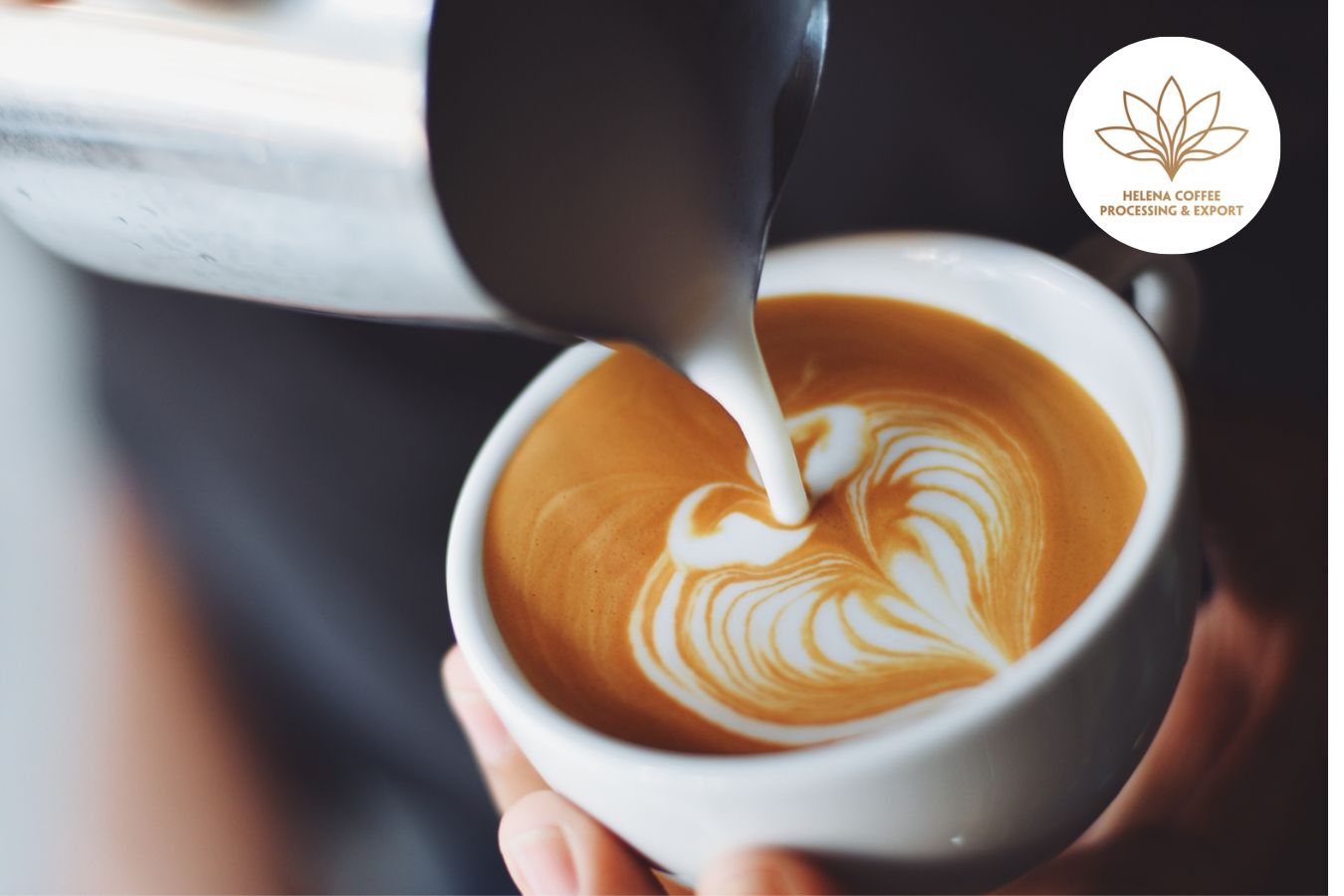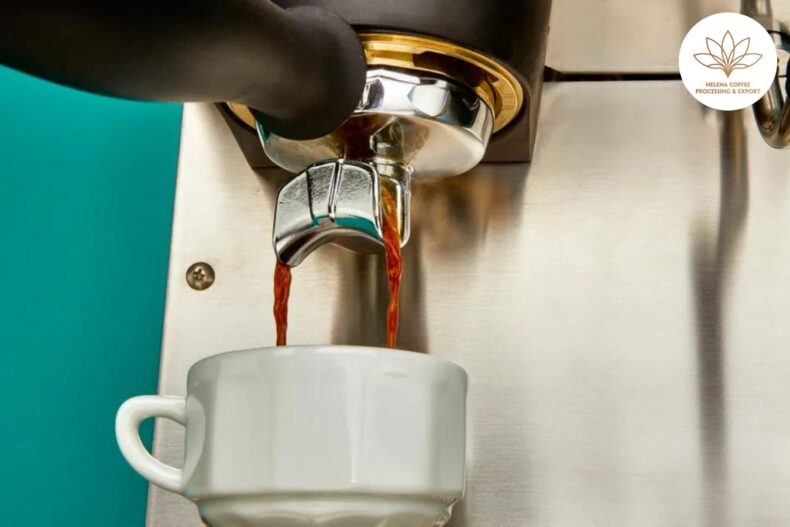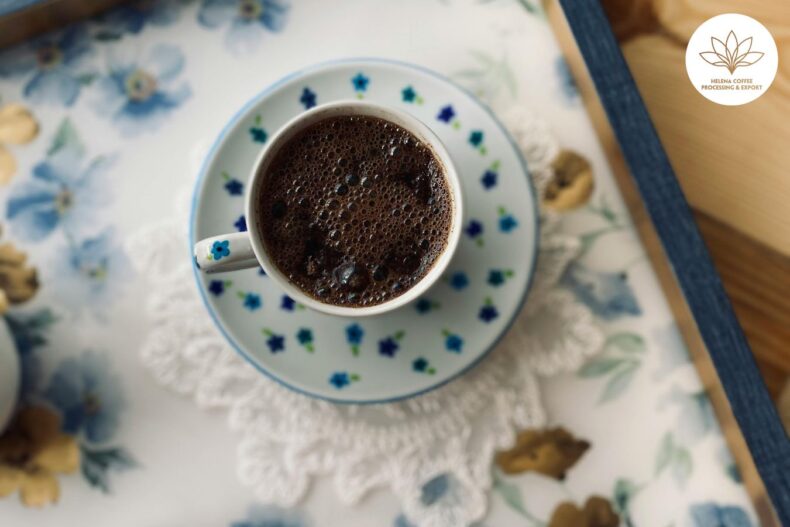
What do we know about Crema in coffee?
Coffee professionals use Crema to assess the quality of espresso extracts. For example, Crema indicates whether all parameters affecting extraction, such as degassing time, background, and pressure mechanism, are accurate.
Most customers prefer the presence of a beautiful layer of Crema on the cup; some will stir it with a spoon, while others will rotate the cup to save the Crema for the last sip of coffee. All of the sensory cues derived from the crema image are used to establish espresso taste expectations with the right balance of flavors.
Finally, most baristas consider the preparation of Crema more of a craft than a science. A precisely positioned coffee layer in the basket that allows high-pressure water to pass through, along with carbon dioxide (CO2) from the roasted coffee and carbonation from the water, is a critical factor in the development of Crema.
To optimize the extraction process and obtain the most delicate layer of Crema, most Baristas prefer to adjust the blender and manipulate procedures such as grooming and cleaning.
However, what effect do color, bubble size, and crema number have on the coffee experience? Is there a single crema that is optimal or representative of the Crema in terms of overall sensory evaluation of coffee?
Before we can think about making the perfect Espresso, we must first answer these questions. To begin with, it is essential to understand the physicochemical components of Crema and how we can refine its qualities to improve its quality. To do so, we must distinguish between crema generation and crema stabilization.
Crema in Espresso/Espresso Machine
Perfect espresso crema
In essence, Crema is a colloidal system characterized by the dispersion of air bubbles in the continuous phase of the espresso extract. The gas phase is mainly made up of CO2 generated during coffee roasting; then, a part is trapped in the bean’s cell structure.
The continuous phase is an emulsion (oil and water) in which tiny oil droplets (less than 10 nm, or about 0.00001 mm) are scattered throughout a multi-component coffee extract. Sugars, acids, proteins and other chemicals, and small solid (2-5 nm) coffee cell fragments.
An energy source is needed to induce dispersion of air fat in the liquid phase in the making of Crema. The pressure of the espresso machine provides this kind of energy to the coffee.
Achille Gaggia created the lever espresso machine in 1948, which uses a hand-operated spring piston to push the juice through the coffee at about 9 bar pressure. This was the first time oil and CO2 were emulsified in an espresso, creating the Crema we know today. Indeed, Gaggia promoted it as an entirely new beverage with a groundbreaking name: “Crema caffè natural.”
What are crema balloons made of?
Several attempts have been made to explain how crema forms in good espresso machine. According to the researchers, the emulsification of the coffee oil in the extract occurs when water is passed through the coffee under high pressure – the oil is insoluble in water. Still, due to the high pressure, these water droplets will emulsify.
The oil is spread in the water after being reduced to a microscopic size. The Crema we are talking about is created by this emulsifying mechanism in combination with some CO2 gas (these gases are trapped in the cell structure of the grain during roasting and compression due to high pressure).
The longer the coffee is under pressure, the more CO2 is released and the thicker the crema layer is. On the other hand, CO2 obstructs water flow, causing the substances in the particles to diffuse out. Therefore, we aim to balance the freshness of the coffee just enough for the growth of Crema throughout the entire process of coffee storage to Espresso preparation.
Another study found that CO2 supersaturation in coffee could be a factor in the development of Crema in good espresso. More specifically, the concentration of CO2 that can be dissolved in water at pressure and temperature is often lower than the concentration of CO2 extracted under high pressure (9 bar) at water temperatures near 100°C.
Dissolving CO2 in water at high pressure and temperature causes the supersaturation of CO2 in the coffee extract. It leads to tiny bubbles after the phase transition from high pressure to high pressure—medium (when the high-pressure extraction exits the coffee and enters the cup).
Factors affecting the stability of Crema
Destruction occurs in three steps after the Crema is created before it dissolves completely. The first is the accumulation of bubbles close together, which occurs when the membrane separating them collapses.
Second, the tiny bubbles collapse into giant bubbles after Ostwald ripens due to the pressure difference. Finally, the liquid separates from the air bubble due to gravity.
This causes the Crema to thin. While these phenomena are the same in any espresso, the effect of high temperature and the way it cools from the top add to the complexity of understanding the physical sensations during its formation. . formation and stabilization of Crema.
On the other hand, many studies have shown that lipid content can change foam stability (as said lipid is inherently insoluble in water, it always tries to separate from water leading to instability). Crema).
Total lipids in a standard cup of Espresso (25 ml) range from 45 to 146 mg for Arabica and 14 to 119 mg for Robusta (completely pure). In other words, Arabica-based Espresso has a higher total lipid profile than Robusta-based Espresso, so the risk of lipid-induced foam instability is higher for Arabica.
Water temperature and quality
Several previous studies have suggested that the relatively high temperature of Espresso can negatively affect the stability of Rema. The main reason is that evaporating water reduces the space between the bubbles and deflates the bubbles quickly.
Finally, the stability of Crema on Espresso is affected by water hardness (The Craft and Science of Coffee). The instability of the foaming mechanism is due to changes in the ion content or interactions between the cations and the protein/polysaccharide complex.
The chemical basis of Crema
To date, very few extensive studies on the chemical constituents responsible for the creation and preservation of Espresso crema have been published. Several studies have found that the total amount of protein in the extract affects the quality of the Crema.
Ice cream stability is related to carbohydrate components such as galactomannan and arabinogalactan polysaccharides. Total dissolved solids, pH, lipids, proteins and carbohydrate content were among other dependent variables found.
Does Robusta Coffee Produce Better Crema?
Recent research on the components and activities of Crema in coffee has revealed some new details about the molecular structure of the molecule that causes crema formation. The researchers identified that the sucrose ester group (1) and the 4-vinylcatechol oligomer group (2) were the two main active components of coffee crema foam (data by Kornas et al. Hofmann).
The sucrose ester, also known as the sucrose fatty acid ester, is a naturally occurring compound in green coffee that degrades over time as roasting time increases.
Caffeic acid is the main reason for the distinctive and distinctive bitter taste of Espresso coffee.
During roasting, the initial CGA degradation event yields caffeic acid and 4-vinylcatechol. As a result, 4-vinylcatechol oligomers are produced as a secondary product with long roasting.
We have also shown that vinylcatechol four oligomers, rather than sucrose esters, play an essential role in determining the structure of the crema layer in a good espresso after some more complex studies.
These findings suggest that Robusta coffee, which has higher caffeic acid and chlorogenic acid content than Arabica coffee, promotes the formation of surfactant 4-vinylcatechol during roasting, combined with the role of pressure and CO2, which may explain why Robusta produces more foam in an Espresso blend than Arabica.
Conclude
Finally, despite the widespread popularity of espresso crema shots and the resulting popularity of Crema around the world, systematic chemical and physical information about Crema is currently lacking.
Illy and Navarini’s most current and extensive investigations, published in the journal The Craft and Science of Coffee since 2011, demonstrate a significant gap in molecular understanding in the making and stabilizing of the crema espresso.
Furthermore, given the complexity of Espresso extract in general and Crema in particular, the importance of Crema in user experience, as well as how Crema affects visual, olfactory and taste elements, remains unclear well known.


